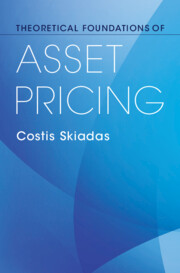Refine search
Actions for selected content:
3 results
1 - Market and Arbitrage Pricing
-
- Book:
- Theoretical Foundations of Asset Pricing
- Published online:
- 06 February 2025
- Print publication:
- 13 February 2025, pp 1-41
-
- Chapter
-
- You have access
- Export citation

Theoretical Foundations of Asset Pricing
-
- Published online:
- 06 February 2025
- Print publication:
- 13 February 2025
16 - Basic Arbitrage Theory
- from Part V - Applications in Financial Economics
-
- Book:
- Point Processes and Jump Diffusions
- Published online:
- 27 May 2021
- Print publication:
- 17 June 2021, pp 173-187
-
- Chapter
- Export citation
